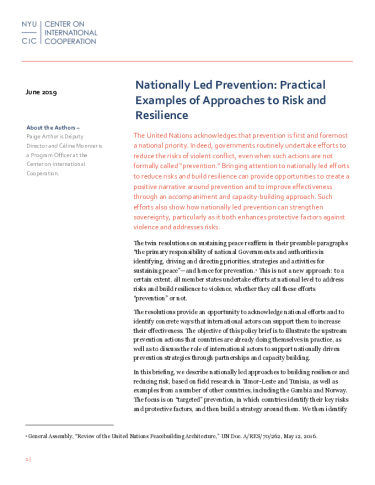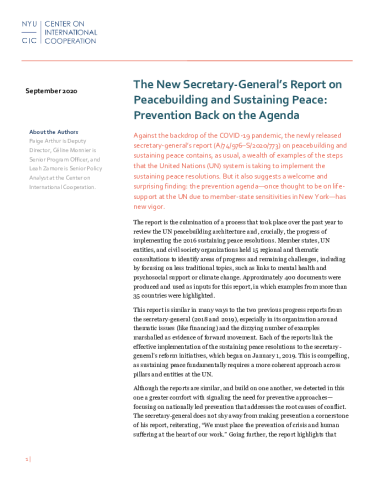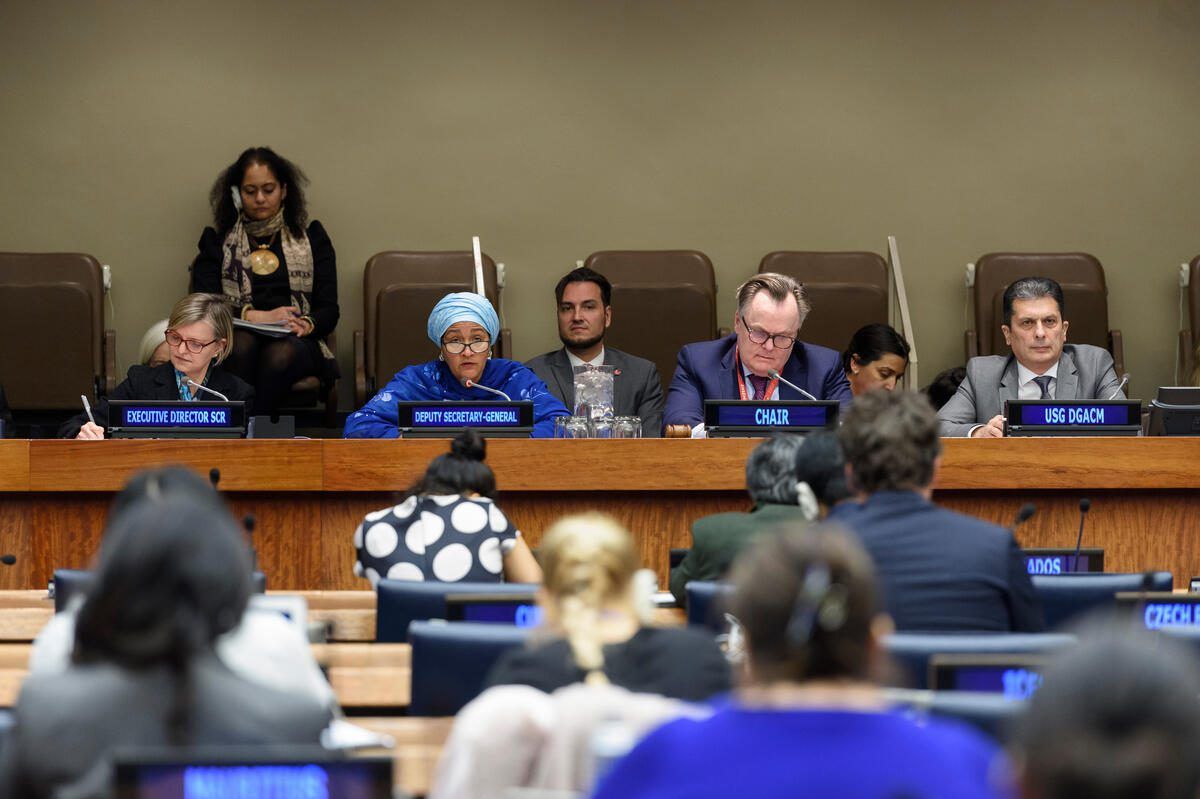From good intentions to practice: adopting an evidence-based definition of prevention
An ounce of prevention is worth a pound of cure, as the old saying goes. And yet, progress on prevention at the United Nations (UN) has long been hindered by challenges such as the lack of an agreed definition along with concerns about international intervention as well as the fear of stigmatization. The secretary-general’s recently issued policy brief on a New Agenda for Peace addresses many of the longstanding concerns around the prevention agenda by highlighting the universal importance of prevention and framing prevention around national strategies to address the different drivers and enablers of violence and conflict in societies.
This is good news. But now what?
Prevention is used to describe everything from deployment of security forces into the streets to development activities. Because the concept of prevention can be so nebulous, national actors who are interested in pursuing prevention in principle can end up not acting, acting inefficiently, or not getting adequate support from international partners because of a lack of clarity on what prevention means in practice. Ultimately, many lives end up lost and resources wasted because of unfounded fears and a lack of shared vision. Clarity on guiding principles and key considerations for effective nationally led prevention strategies can be an important first step to help member states design and implement their own strategies and for the UN and other partners to better support such efforts.
A considerable amount of analysis of prevention has already been done, including through the 2018 Pathways for Peace Report (P4P), the Prevention Project, the Pathfinders Review of the Evidence and a Global Strategy for Violence Prevention. In addition, there have been many lessons learned from the implementation of crime prevention strategies, national action plans on the prevention of violent extremism, and infrastructures for peace, among others. The UN system can draw from the experience of its own efforts in support of national strategies. Several observations can be distilled from this existing body of analysis.
First, the concept of prevention should be understood as a sovereignty-enhancing concept and one that will look different in each society. This is necessary to destigmatize the agenda and foster trust between governments and the multilateral system.
Second, past experiences suggest a series of necessary conditions for effective strategies. For example:
- Maintaining political and social will must be understood as a deliberate and continuous effort that should be an integral element of any prevention strategy.
- Although the temptation to simply replicate previous projects and efforts may be strong, violence prevention has to address complex and context-specific social systems. Violence has multiple and interrelated causes, and therefore effective prevention efforts engage multiple stakeholders across levels and across sectors. National prevention strategies serve as linchpins that bring together all of these efforts.
- Prevention strategies need to be evidence-based. This is, unfortunately, still too rare. What differentiates violence prevention from any other activity (e.g., security, development, or human rights work) is a sound diagnosis of root causes for violence and sources of resilience, and efforts to address them. Early warning systems and violence observatories tend to look at violence trends (e.g., homicide rates, communal conflicts, election-related violence) but not their underlying causes (e.g., negative experience with the security sector, growth of the size of the group that suffers from systematic exclusion). The Pathways for Peace report called for a shift from monitoring early violence to awareness of risk, but this shift has not happened. Prevention strategies should be designed around analyses of root causes and sources of resilience, and should be continuously adapted through participatory action research and iterative actions. An evidence-based approach requires analytical and evaluation capacity at the country level, which donors and the multilateral system can help build and foster.
- Our timelines for prevention are also too short, and we know it. Violence prevention requires structural changes that can take decades or even generations. Often, violence prevention strategies last a couple of years before being discontinued, due to a shift in donors’ or political leadership’s interests. We blame it on prevention for its ineffectiveness when in reality we never gave prevention a chance.
None of these elements are new, and there are other conditions that could also be listed. But all of these conditions need to be addressed or else success is unlikely, societies risk sliding into violence, and investments are likely to be lost. These elements are also interdependent. For example, if the evidence base is weak it is harder to build political and social will for prevention because we cannot make the case for investment. If strategies are discontinued after four years because of a change of government or a lack of funding, the effect is limited and further erodes the trust in prevention. Consequently, it is not only important for member states to commit to nationally led violence prevention strategies, but it is also necessary to understand the parameters that will increase the effectiveness of such strategies.
From now to September 2024
Looking ahead to the Summit of the Future, member states can build on the secretary-general’s recommendations in the New Agenda for Peace to agree–through the Pact for the Future–on a set of principles to help willing national governments to develop or strengthen effective violence prevention strategies. Such principles ought to be non-binding, non-threatening, and enable a context-specific approach, and should reflect the fact that the most effective prevention strategies have had some common characteristics, including being context-specific, evidence-based, sustainable, integrated, and inclusive of all elements of society. In turn, these principles could help the UN, including the Peacebuilding Commission, as well as bilateral donors to better align their own efforts in support of national actors in the design and implementation of national strategies. A body of agreed principles and key considerations can also help donors adopt more coordinated approaches and messages, rather than pushing national actors in different directions. A model that can be built upon are the guidelines previously endorsed by member states on crime prevention.
The UN Charter calls to save the next generation from the scourge of war. In a world where geopolitical tensions are heightened, all countries are affected by polycrisis that test social contracts, and violence has increased in conflict zones (and is even higher outside of conflict zones)—we need to do better to fulfill this commitment. This is a unique opportunity to do so both by adopting effective in-country approaches and rebuilding the trust in the multilateral system.






